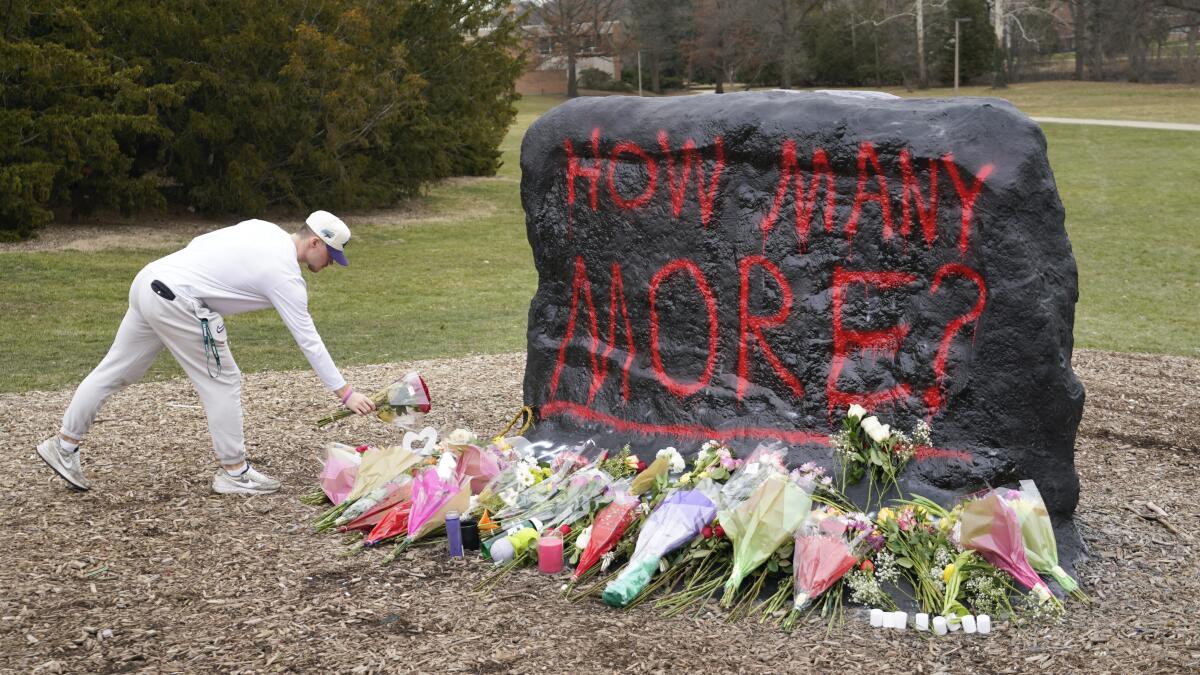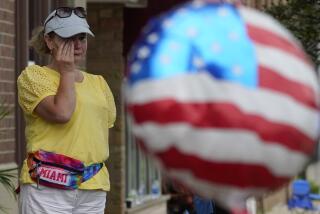Opinion: How repeat exposure to shootings like Michigan State’s traumatizes young people — and what we can do about it

Yet again this week we are grappling with the news of another mass shooting on school grounds, this time at Michigan State University. Monday’s shooting took place on the eve of the fifth anniversary of the attack that killed 17 students and staffers at Marjory Stoneman Douglas High School in Parkland, Fla., and nine months after the mass shooting at Robb Elementary School in Uvalde, Texas, that killed 21 children and teachers. Some students who were present at the MSU shooting are also survivors of another Michigan school shooting almost 15 months ago at Oxford High School.
What happens when children are repeatedly exposed to this kind of violence, grief and trauma over the course of their lives?
The data are clear: U.S. school shootings have increased over the last few years. An estimated 338,000 children have been exposed to gun violence in K-12 schools alone since 1999. And gun violence on college campuses persists. It is currently the leading cause of death among children and teens in the U.S. There is now a generation of young adults whose childhoods have been directly shaped by exposure to gun violence in and outside of their schools.
Exposure to gun violence at any point during childhood is an adverse childhood experience, and extensive research on exposure to these experiences shows links to dozens of negative outcomes in a person’s life. These can include poor mental health, increased risk for chronic disease, addiction, suicide, decreased school success and even premature death. An estimated 30% of children report experiencing at least one adverse childhood experience. The more traumas a child experiences, the greater their risk of poor physical and mental health outcomes.
For young people, exposure to adverse childhood experiences such as gun violence is more likely to result in these long-term serious health challenges if there are limited protective factors in place and if there is no meaningful early intervention or support provided in the aftermath of the trauma.
In response to gun violence specifically, over the past years we have seen increased security in schools and universities through active shooter drills, calls to arm teachers and staff and the addition of more metal detectors, among dozens of other safety tactics. No matter how well-intended, there is little evidence that these solutions reduce the frequency and lethality of these violent acts. This is in spite of the scientific evidence guiding solutions that do work and that our elected officials could turn to in order to help prevent future tragedies.
Given how slow it is to implement meaningful gun reform laws and with the frequency of gun violence, we need to ensure we are doing all we can to support affected communities — especially young people. Early interventions are crucial as they grapple with the direct and indirect consequences of being exposed to repeat gun violence during their formative years. Examples include access to schoolwide services that specifically address post-traumatic stress disorder in the aftermath of a shooting and increased access to primary care, family therapy, grief support and school-based programming that centers trauma-informed practices and care for students and their communities.
Unfortunately, sufficient and ready access to these kinds of support services continues to be hard to come by. Here too, we see politics overriding policy. Many politicians are often quick to blame mental illness for this kind of violence, but many of these same legislators recently voted against a federal mental health bill and a school safety act that would have provided a significant funding increase for mental health programs. At a time when we lack the most basic services for students, as observed in the current shortage of school psychologists and other mental health professionals, this kind of support is crucial.
As a nation, we are not preventing these shootings and are not equipped with the resources or infrastructure to effectively support communities in either the short- or long-term aftermath of these violent acts. All students, whether kindergartners or college students, deserve to attend school in a safe, secure and supportive environment. They deserve more than 48 hours of canceled classes and meaningless calls for “thoughts and prayers” if a tragedy does occur. They deserve a comprehensive, science-informed, thoughtful gun violence prevention plan that puts them first and works to change the structures that can lead to shootings like the one at MSU. The good news is that those solutions exist. We now need to start carrying them out.
Sonali Rajan is associate professor at Teachers College, Columbia University. Charles Branas is professor and chair of the Department of Epidemiology at the Mailman School of Public Health, Columbia University. Mark S. Kaplan is professor of social welfare at the UCLA Luskin School of Public Affairs.
More to Read
A cure for the common opinion
Get thought-provoking perspectives with our weekly newsletter.
You may occasionally receive promotional content from the Los Angeles Times.










